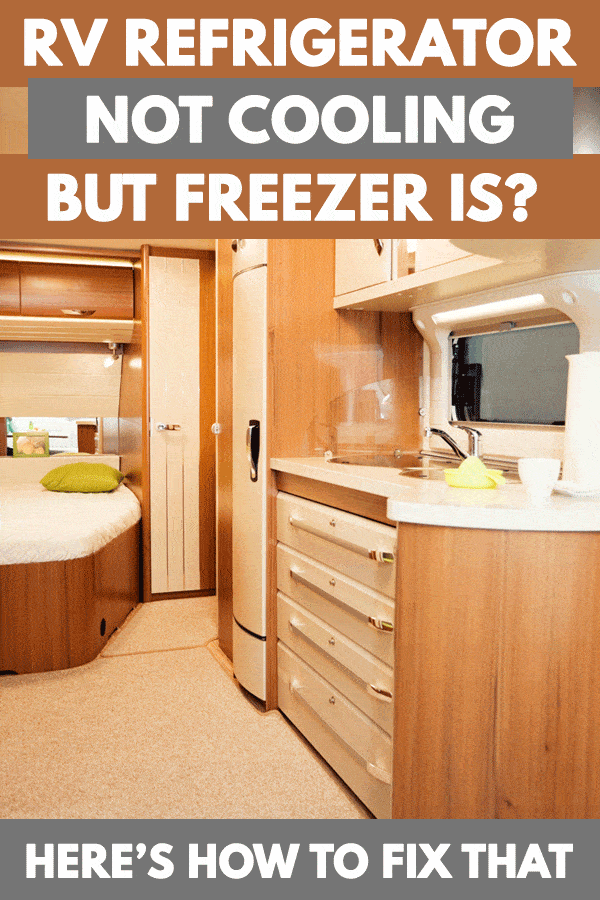 The last thing you want out on the road is to have your RV refrigerator malfunctioning. What’s even odder is that the freezer is in working condition but the refrigerator isn’t, so what gives? Rest assured this is a relatively common complaint from RV owners. We've done the research to figure out why this is happening and you'll find the answers in this post.
The last thing you want out on the road is to have your RV refrigerator malfunctioning. What’s even odder is that the freezer is in working condition but the refrigerator isn’t, so what gives? Rest assured this is a relatively common complaint from RV owners. We've done the research to figure out why this is happening and you'll find the answers in this post.
Put simply, the refrigerant (the liquid that provides the cooling) goes to the freezer first and then makes rounds to the refrigerator. So if your fridge’s cooling capacity is compromised, the refrigerator will be affected first. And yes, the bouncier and curvier the road gets, the more the refrigerant swivels around. Make sure your RV rides as smoothly as possible to prevent the refrigerant from clogging up the system. This could result in costly repairs.
The good news is that you don’t have to be an expert in all things refrigerators to troubleshoot your fridge. Keep reading as we discuss the common reasons for this specific malfunction and see how you can troubleshoot it in common RV fridge brands.
Diagnosing Issues with Your RV Refrigerator
It is of critical importance to keep your RV refrigerator at the unit level. Use a carpenter’s level for this task. To determine if your RV refrigerator is in working order, you could use a thermometer, although the same can be achieved if you simply touch the cooling coils inside the freezer and refrigerator. Try to look behind the refrigerator to see if the flame is present (if you’re in gas mode). If the refrigerator runs on electricity, try to see if the heating element is hot enough. Touching the heating element could cause a burn.
The freezer compartment is the first to get cooled before the refrigerant goes to the fridge. So if the freezer is working fine but the refrigerator isn’t, you probably have airflow problems. In many cases, the freezer moves cool air into the fridge using a diffuser. Sometimes, the diffuser duct gets clogged up with ice, and you can verify this by listening to the evaporator fan.
If you don’t immediately hear the noise of the evaporator fan, don’t worry. The fan cycles on and off, try again later.
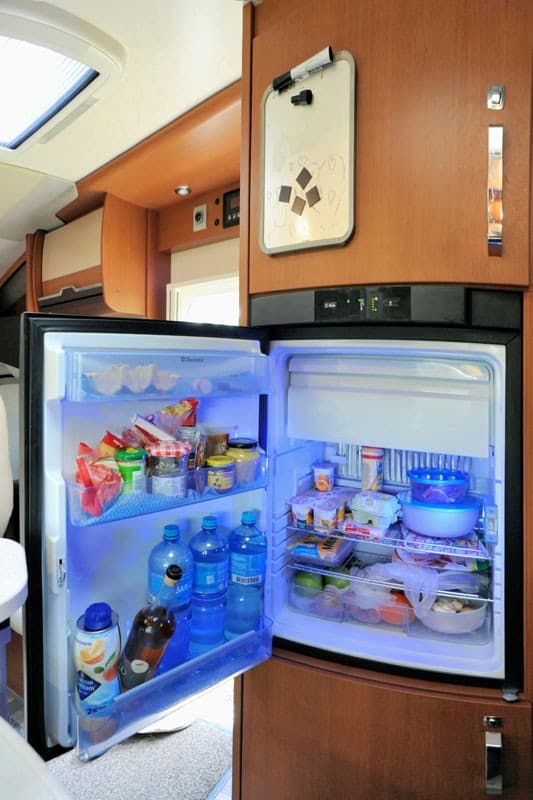
Troubleshooting a Dometic Refrigerator
RV refrigerators are different than conventional models. For starters, they quickly start warming up when opened. It will take anywhere from 8 to 24 hours for the refrigerator to start cooling, so try tossing in as many cold items as you have and give it a go. A refrigerator provides cooling by absorbing heat, so if it doesn’t have anything to take heat from, it will become noticeably warmer.
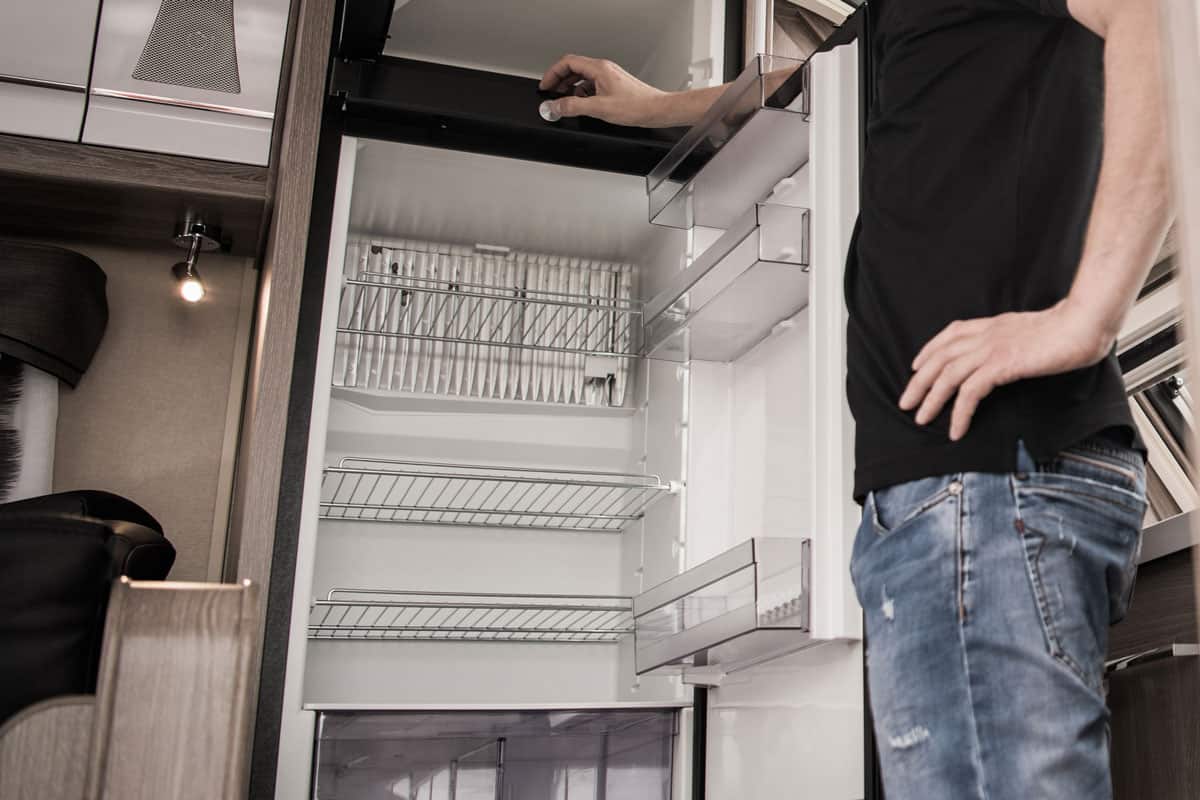
Here’s what you should do:
- Defrost layers of ice if there’s more than a quarter worth of an inch piled up.
- Check to see if the refrigerator’s door seals are snugly tight.
- It helps to have a manometer handy to verify the pressure of the propane.
- Check to see if the airflow in the top and bottom of the outside area is unobstructed. It is very important for the upper refrigerator vent to have maximum airflow otherwise the heat will accumulate.
- Clean the refrigerator’s burner as outlined in your Dometic manual. If the flame size is compromised, it will negatively affect cooling performance.
- Try shutting off the Climate Control switch to see if it makes any difference. Some users have reported it improves cooling efficiency in the long run.
How cold should an RV refrigerator get?
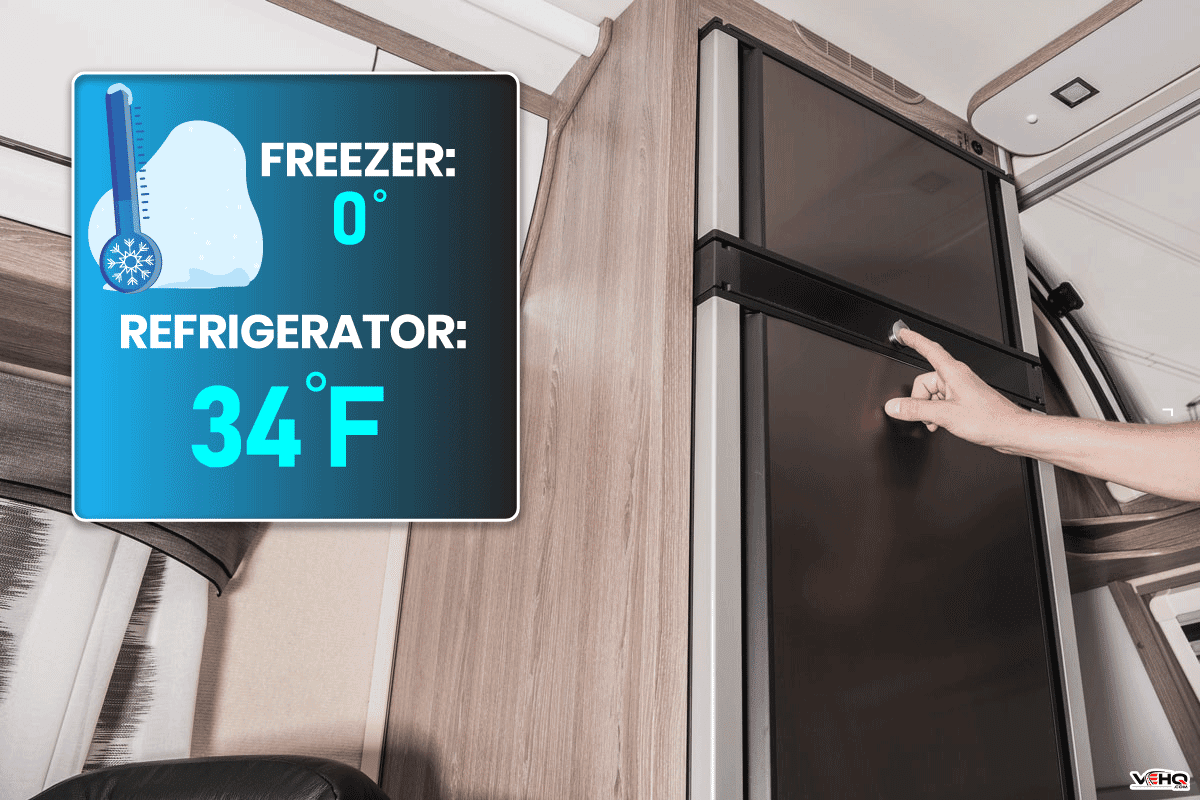
The freezer should be at zero degrees while the refrigerator should be at 34 °F.
The main compartment of your RV refrigerator should hover around 40 to 42°, like any other fridge. Make sure to use a refrigerator thermometer to accurately measure the temperatures. While the newer refrigerators have more tolerance for steeper roads, they suffer from the same design flaws as conventional refrigerators. For the most part, they can operate with a little more than 3 degrees out of level at an incline.
This will add more stress to the refrigerator and shorten its lifespan in the long run. Try your best to drive the RV on a level road. If you know you’ll be driving on an incline for a long period, try turning off the refrigerator. To ensure that your RV fridge is level, try using a carpenter’s level to ensure that RV is close to level side to side and front to front.
How Long Does it take for the RV Refrigerator to Cool?
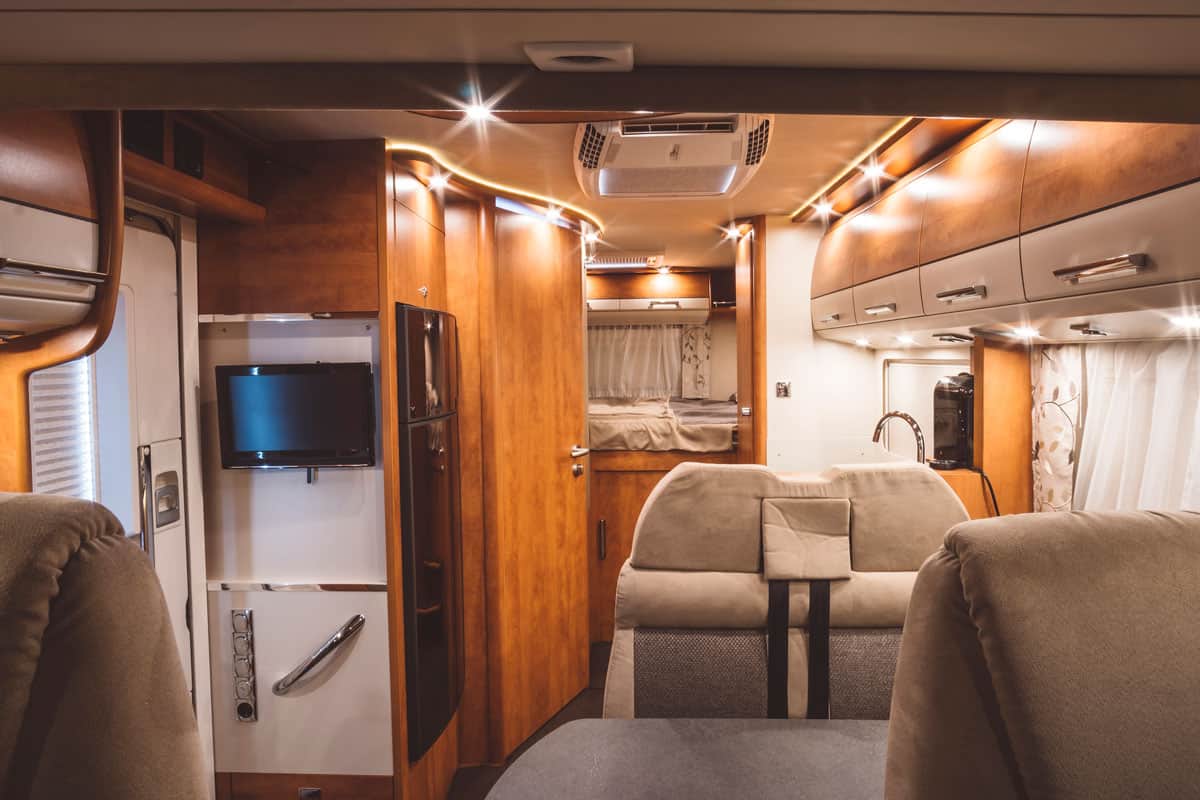
Our experience tells us that the initial cool-down process will take anywhere from four to six hours to reach full cooling potential. Older models will take longer, or upwards of up to 24 hours. If you’re in electric mode, don’t be alarmed if it takes longer for the refrigerator to start cooling. This is normal, particularly if the weather is super hot.
We recommend turning the RV fridge on for the day before you leave for the trip, or at least before you plan on putting your food into it. Do make sure that when you put the food in, it is already cold, to begin with. This eases the stress on the fridge, especially if it started operating recently.
Keep in mind that this fridge isn’t like the one in your home, so try not to open and close the fridge very often. Definitely, don’t stand with the door open wondering what you want. Simply open the door, get your item, and shut it tight.
Read more (and this is important!) - How to keep an RV fridge cool while on the road and how to properly pack an RV fridge.
Help with Air Circulation
Don’t let your fridge do all the hard work. Get a cheap battery refrigerator fan. Simply install the fan in front of the refrigerator compartment blowing in an upward direction. This will not only reduce the initial cool-down time by a factor of 2 but will dramatically improve the refrigerator’s efficiency.
Inspect the Roof Vents
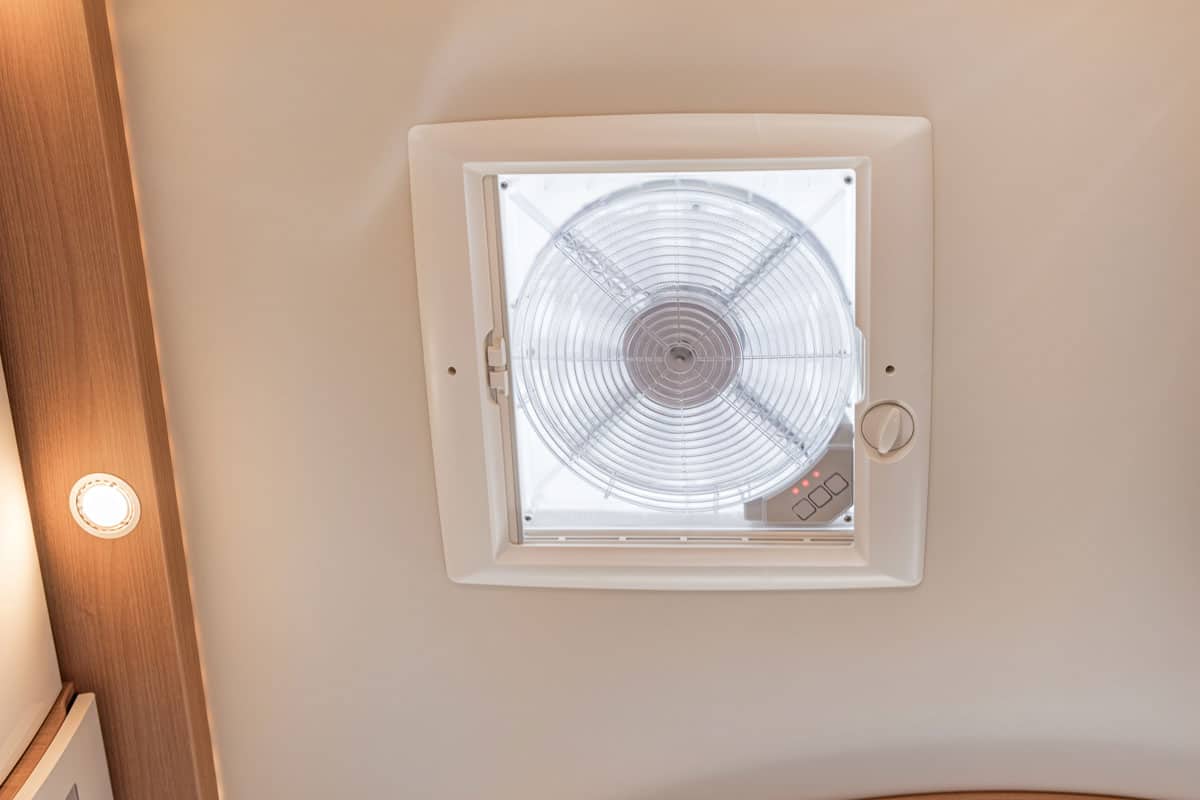
The heat output of your refrigerator is vented behind. This hot air escapes through the refrigerator vent and escapes out of the roof vent. If the roof vent is obstructed, the cooling capacity of your RV fridge will decrease. To aid with the prompt removal of air through the vent, you could place thermostatically controlled 12-volt vent fans at the top of the roof vent or the back of the refrigerator.
The fan will direct the hot air away from the refrigerator. This fan should be easy to install if you know your way around tools. But you could have an experienced professional place for you. Many users report that this ‘vent’ fan optimizes the refrigerator’s cooling capacity by up to 50 percent.
Overall
We hope this post helped you figure out what could be wrong with your RV fridge and why it's not cooling properly - even though the fridge still works. And remember, if you're not technically inclined, it's perfectly ok to call in a professional and let her or him figure out what needs to be fixed. This is especially true if you suspect a problem related to the electricity system in your RV. Stay cool and stay safe!

I turned on my RV gas refrigerator (using electric mode) about 2 hours ago. It is now 15 degrees in the freezer compartment and 85 degrees in the main refrigerator. Is this normal? The cooling fins in the main refrigerator part are at 85 degrees. I see no way for air to circulate between the freezer and the rest of the refrig. The unit is a Norcold 510 . It is about 12 years old.
Ours does the same thing. Also a Norcold. Freezer will get cold first. 12 hrs later fridge is cold, too.
My refrigerators work I mean my refrigerator is not working but the freezer is how do I know how to find the duct